Contents
It’s no secret that vegetables and fruits become much more expensive in winter, so you want to keep your harvest until spring. Previously, it was not worth thinking about how to store garlic in an apartment – it was too costly and tricky. But now the storage of any vegetable, fruit or berry is quite possible in a city apartment. In this article, we will list everything you need to know about storing this vegetable in the winter.
General rules for storing garlic
To properly store garlic until spring, you should learn a few simple rules.
Select only whole bulbs. Even a small dent can cost you the loss of all your saved crop. Carefully discard all bruised, rotten, cut, insect-eaten heads.
Maintain a stable air temperature. The maximum allowable temperature is +5 degrees, it is with it that garlic will easily spend the winter in the refrigerator.
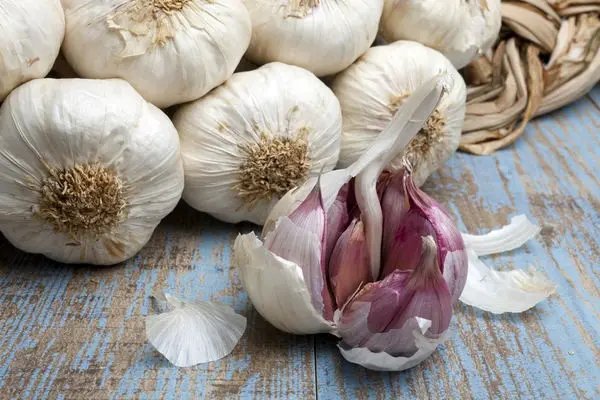
Humidity is the enemy of garlic. It helps soften the cloves, which makes it difficult to keep the crop until spring.
Insects have no place in the house. A great many harmful insects will not refuse to eat fresh garlic. To prevent this, treat rooms where garlic is stored regularly.
Consequences of violating storage rules
It is not in vain that they insist on following the rules. If the storage of garlic is not carried out according to the rules, it will simply rot or become moldy. Agree, not the most pleasant fate for a lovingly grown crop. Therefore, in winter it is very important to monitor the condition of the bulbs and the conditions under which they are stored.
High temperatures have a bad effect on the external and internal state of garlic cloves. They dry out, begin to wrinkle, wither, moreover, they lose all their useful properties and taste. Bulbs wrapped in polyethylene suffer from the greenhouse effect, quickly become moldy and begin to rot. That is why it is so important to properly store them in the winter.
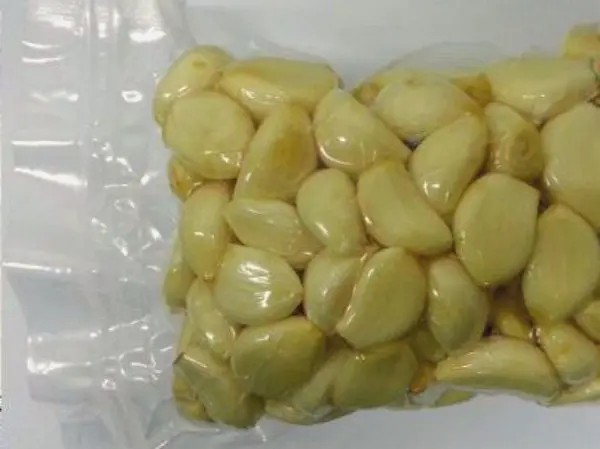
Collection
Different varieties and types of garlic are harvested at different times. Winter varieties planted in autumn ripen by mid-July, that is, before anyone else. But at the same time, their storage is practically impossible – their keeping quality does not exceed 4-5 months. But the seed material from them is one of the best. The same varieties that are planted in spring (spring) ripen in mid-August or early September. They will survive the winter well if stored properly.
Before digging up the crop, check if it is ripe: the leaves should turn yellow, the false stem should become soft, and the bulb itself should be dense when you rake the ground.
Wait for dry weather, early in the morning or late in the evening, arm yourself with a pitchfork and go to the garden. With a pitchfork, you need to carefully pry the bulbs, trying not to injure them and not cut off the roots. The dug out bulbs should be cleaned from the ground and put under a canopy or put in bags and covered with tops of plants, leaves, cloth. The main thing is not to leave them in the open sun so that the fruits do not get sunburn.
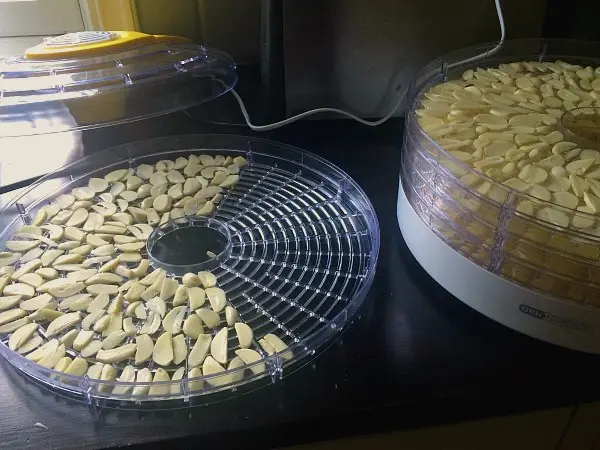
The primary drying of the crop lasts a week, during which time the vegetative processes completely stop and the crop becomes suitable for harvesting for the winter. After the drying time has passed, cut off the roots and stems.
Storage in the apartment
Make sure in advance that there is a place to put the harvested crop. Storage in an apartment is not associated with any difficulties, but it is advisable to immediately determine where the best conditions are.
A glazed balcony, a pantry on the north side of the house, a freezer in the refrigerator will do. In general, any place where the air temperature is low and there is no dampness.
About room temperature
Storage of garlic at room temperature is possible, but does not last long. The air temperature in the range from 17 to 25 degrees, which is considered to be room temperature, adversely affects the condition of the bulbs. Already after 3-4 days, the cloves become soft, sluggish, on the 5-6th day drying begins. The fact is that garlic is not able to retain moisture in the cloves for a long time, therefore, elevated air temperature leads to the fact that moisture evaporates quickly, leaving only dried plant fibers.
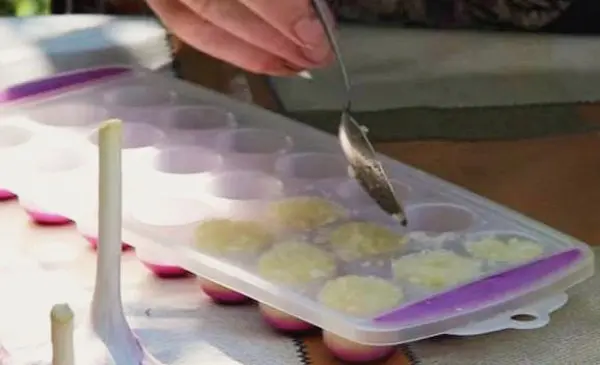
Store garlic in the refrigerator
Storing in the refrigerator is a good way to keep garlic from wilting and give it a chance to “see” winter. Well for these purposes, a freezer or a compartment for vegetables is suitable. Remember that the recommended storage temperature does not exceed +5 degrees Celsius. However, in the refrigerator, you may encounter another problem – humidity. Not keeping track of how humid the refrigerator is, for example, as a result of power outages, you can permanently spoil the entire stored crop.
Store garlic in a jar
One of the most effective and at the same time original ways is to store garlic in a jar. To do this, you will need to peel all the heads from the husk, put the cloves in jars and shake them well. In the future, there are several options for how to save the cloves for the winter: cover with flour or salt, pour in oil, grind.
Banks must be sterilized and dried, otherwise the garlic will become moldy. You can use any oil you like: vegetable, corn, olive. It will get a pleasant garlic flavor after you remove the cloves.
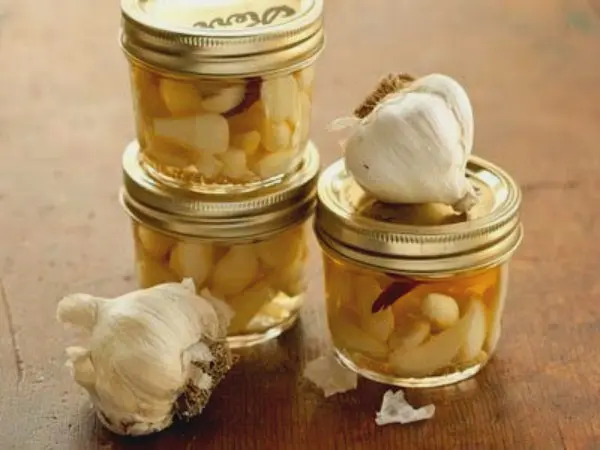
To get garlic powder that keeps well in a jar, cut the peeled cloves into thin slices. Then dry them in the oven for 10-15 minutes and grind them into powder. Taste and smell will remain, and it will take up very little storage space.
Possible problems
Among the obvious problems when storing garlic at home, mold and rot are in the lead. They occur when the humidity and temperature of the air rises, even if you store the product in the refrigerator. It also happens that the storage conditions are met to the smallest detail, but the garlic is still withered and deteriorated – this happens when the bulbs are not sorted out and absolutely everything is collected.
Remember that damaged bulbs deteriorate faster than others, creating unfavorable storage conditions for others.
Regularly ventilate the place where you store the garlic heads in the apartment. Stale air can also cause the development of fungal microflora, the harmful activity of which is manifested by mold and rot.









